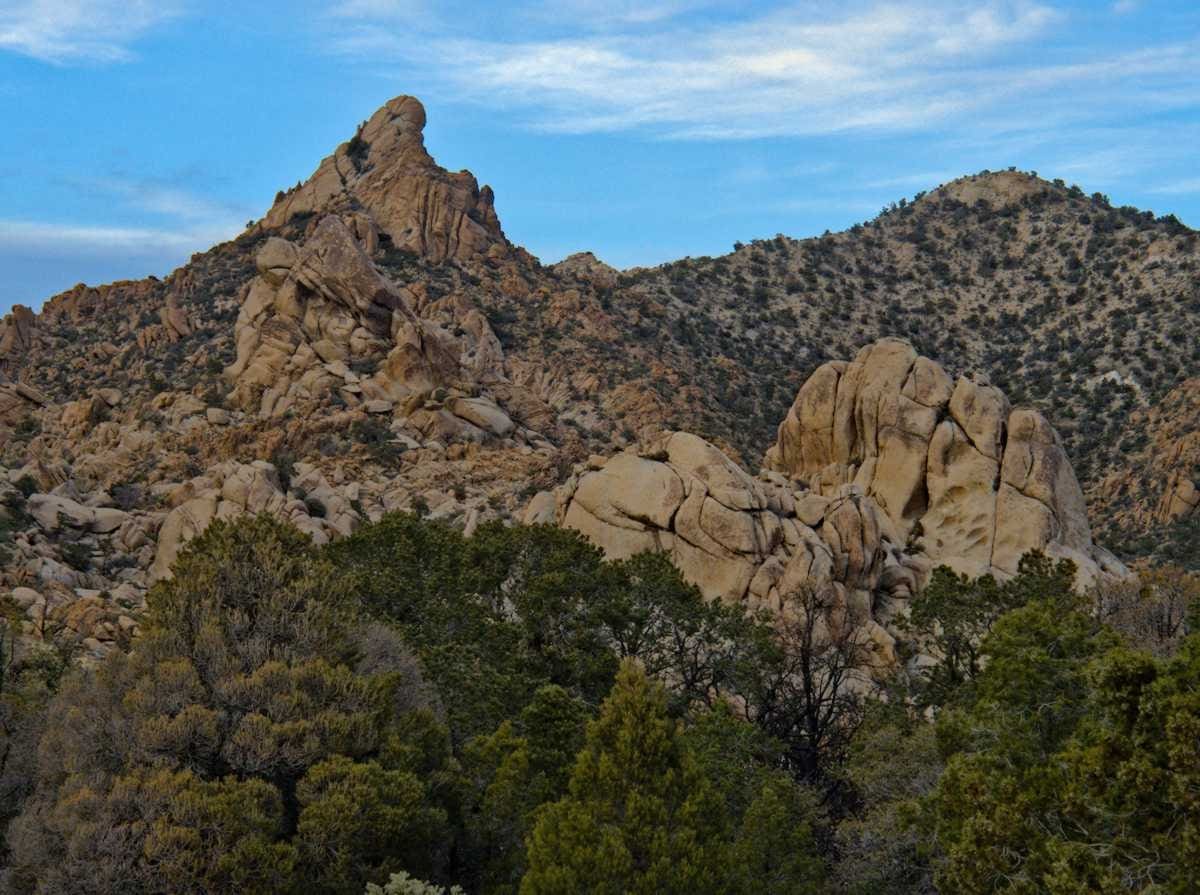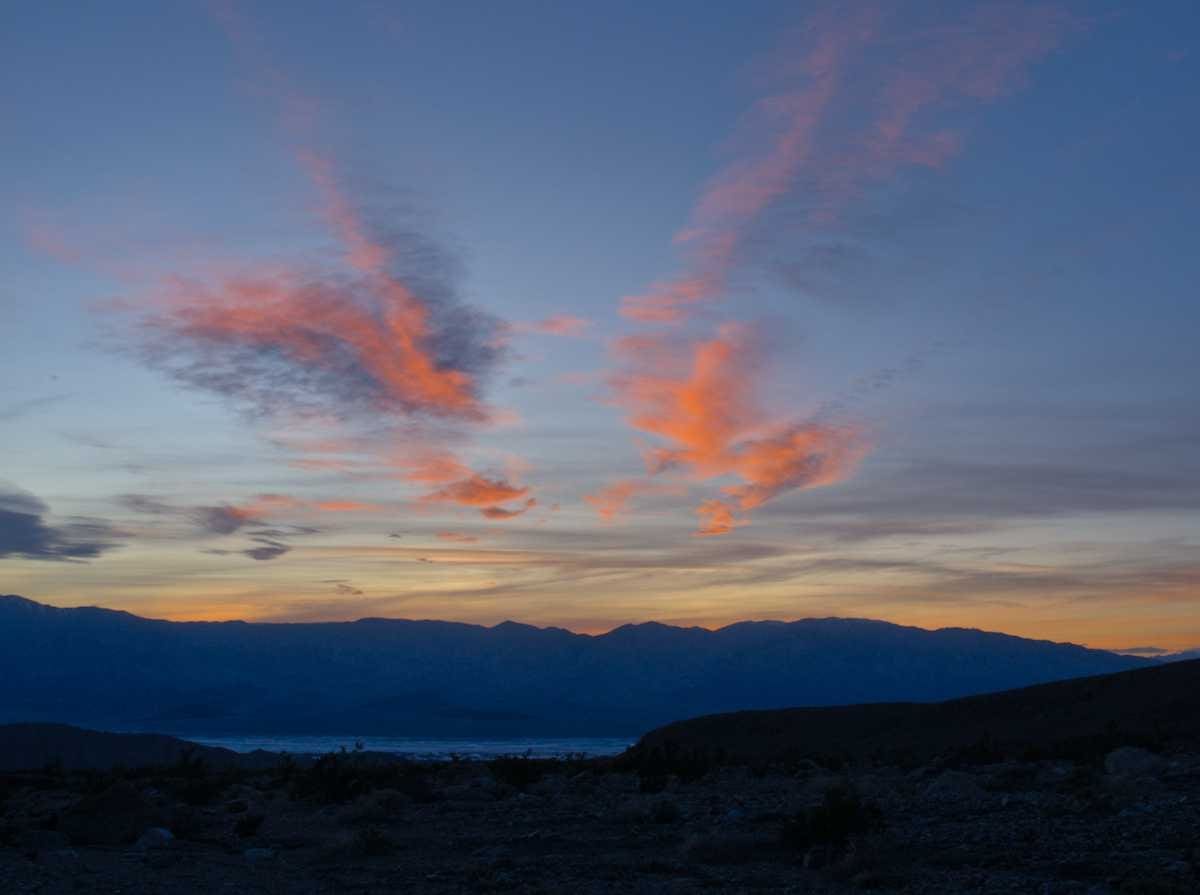As we left Death Valley and headed south we drove through the town of Shoshone. It’s always fun to see the price of regular unleaded there, the day we passed through it was $5.99. Only close to double what we had paid through Idaho and Nevada to get here.
As we continued south toward Baker there was a near steady stream of enormous three story RV’s with names like Adrenaline, Voltage, Sandstorm, Rag’n, Man Cave, Attitude and Stealth. Ok Stealth, you aren’t sneaking up on anybody with your three axles and 50′ length. Someone actually gets paid to think up names for these things! The weekend was winding down and the dunes were emptying of what appeared to be thousands of OHV enthusiasts. I’m glad they have someplace to go and congregate, so we know where to avoid. Welcome back to “civilization.”
Note: This story is part of the series South to Spring. Click the link or head to our timeline for the other chapters of the trip.
We swung into Baker, a town that graffiti artists seem to come from miles around just to vandalize every flat surface that will hold paint. We topped off our tank and got the heck out of there. To finish off my culture shock we got on the interstate and headed east. Signs along the interstate warned of $1000 fines for littering. It looked to me like they stopped enforcing that one sometime back in the 70’s. The speed limit and the use of turn signals also seemed to be mere suggestions. I couldn’t get back to the quiet of the desert soon enough. Luckily we exited the interstate after less than an hour and before long we were entering Mojave National Preserve.
The last time we were in Mojave National Preserve we followed the Mojave Trail in 2018, and we kept looking out to the mountain ranges and wishing we could take a detour to see more of the preserve. We didn’t have enough fuel or time and wanted to stay true to the route, so we just filed it away on “the list” We were finally back to do a little more exploration, and we decided to start with the New York Mountains since they looked so intriguing from afar while traveling the Trail. We made our way to New York Mountain Road and headed toward Caruthers Canyon.

Caruthers Canyon may not be what you think of when you conjure up images while you imagine the Mojave Desert. Sitting at around 6000 feet of elevation there were still a few snowbanks to be found when we arrived in late February. As you approach the canyon you transition out of the Joshua tree forest into a mix of pinyon, juniper and scrub oak trees, all set in a backdrop of granite boulder fields.

After finding camp we took a look around. We had a more extensive hike planned for the next day, but the mountains and boulders seemed to present endless opportunities for photos as we wandered.
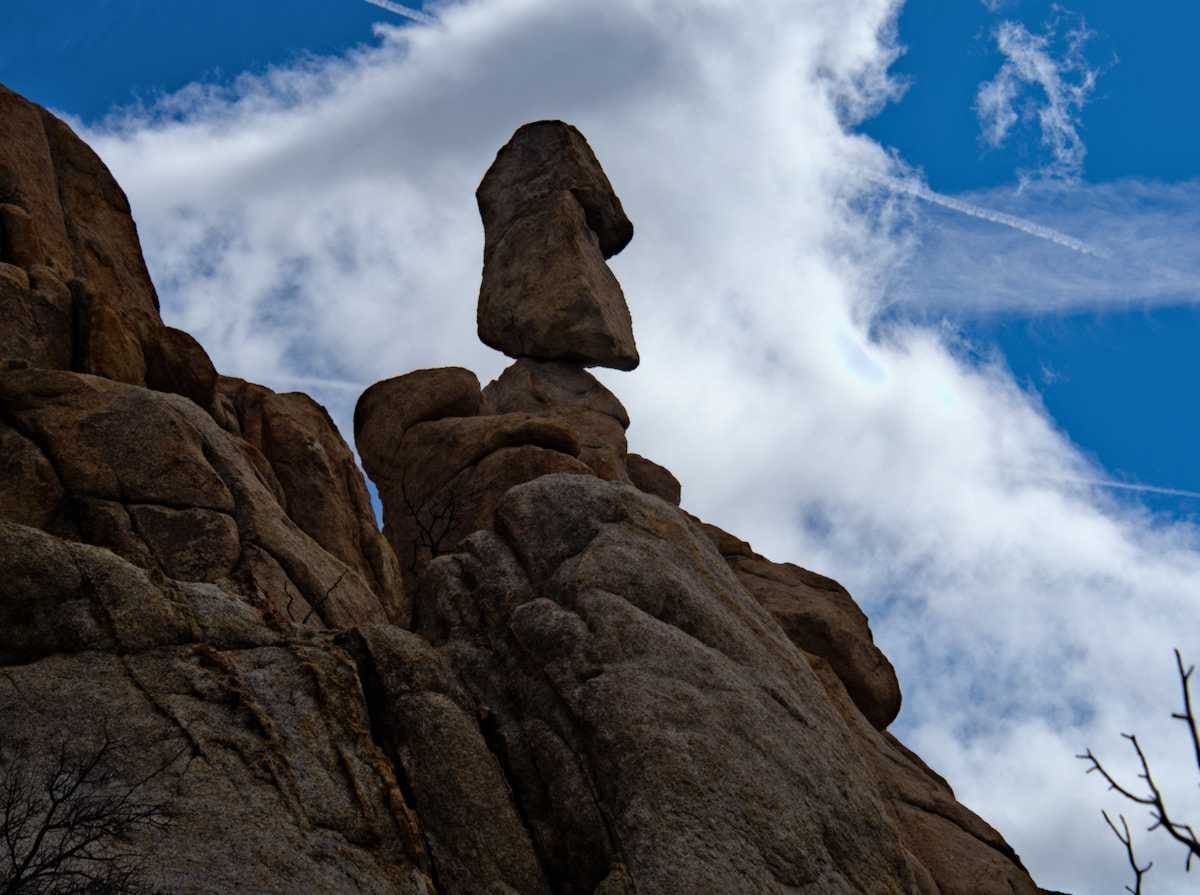
The area experienced a wildfire in 2023 which impacted most of the dispersed sites that are found scattered throughout the canyon. We talked to a few people who had been there before the fire and they all seemed to be feeling that the fire degraded (i.e. ruined) the area. I’m sure it was nice before, (although I might have described it as a tinderbox), but everywhere we looked there was new signs of life springing up from the ashes. I’m sure it’s different than it once was, but it still seemed like a pretty special place, and there was still a lot of the canyon that wasn’t impacted by the fire.
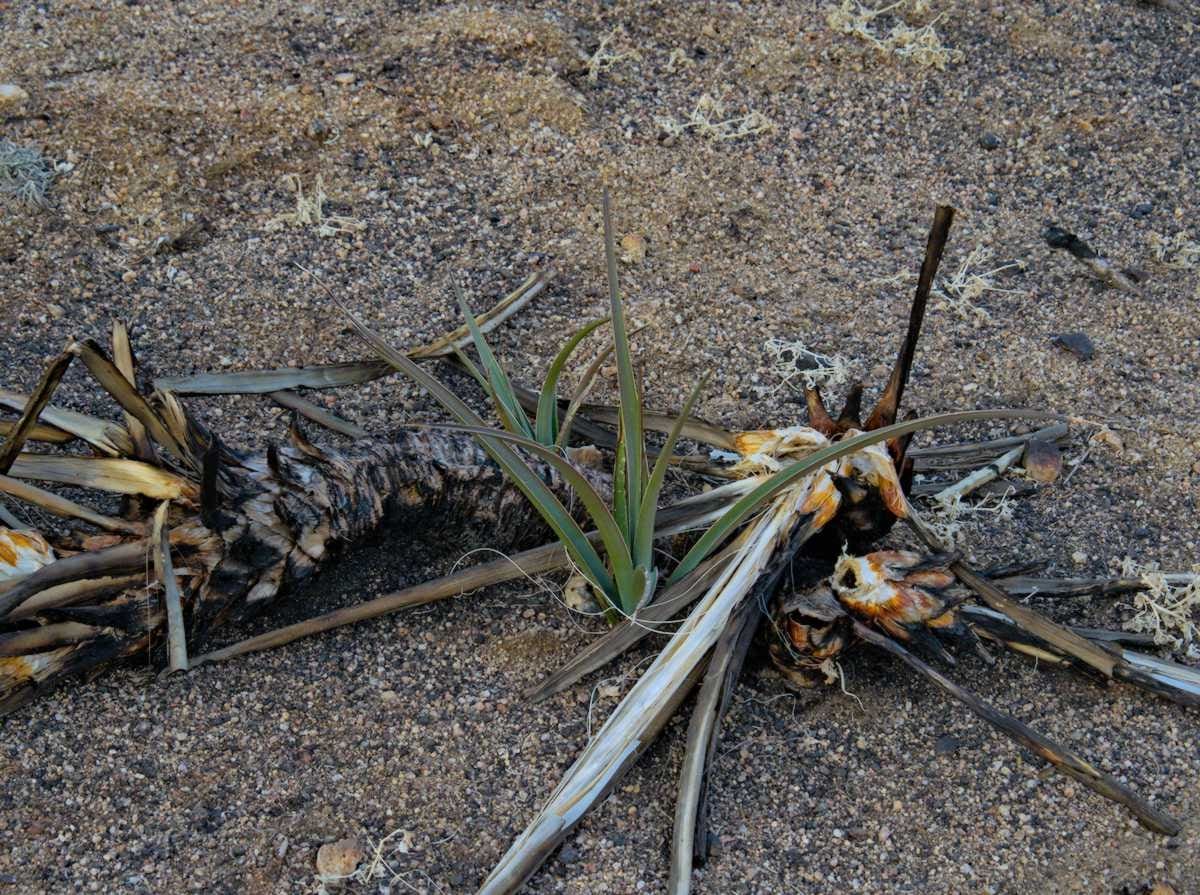
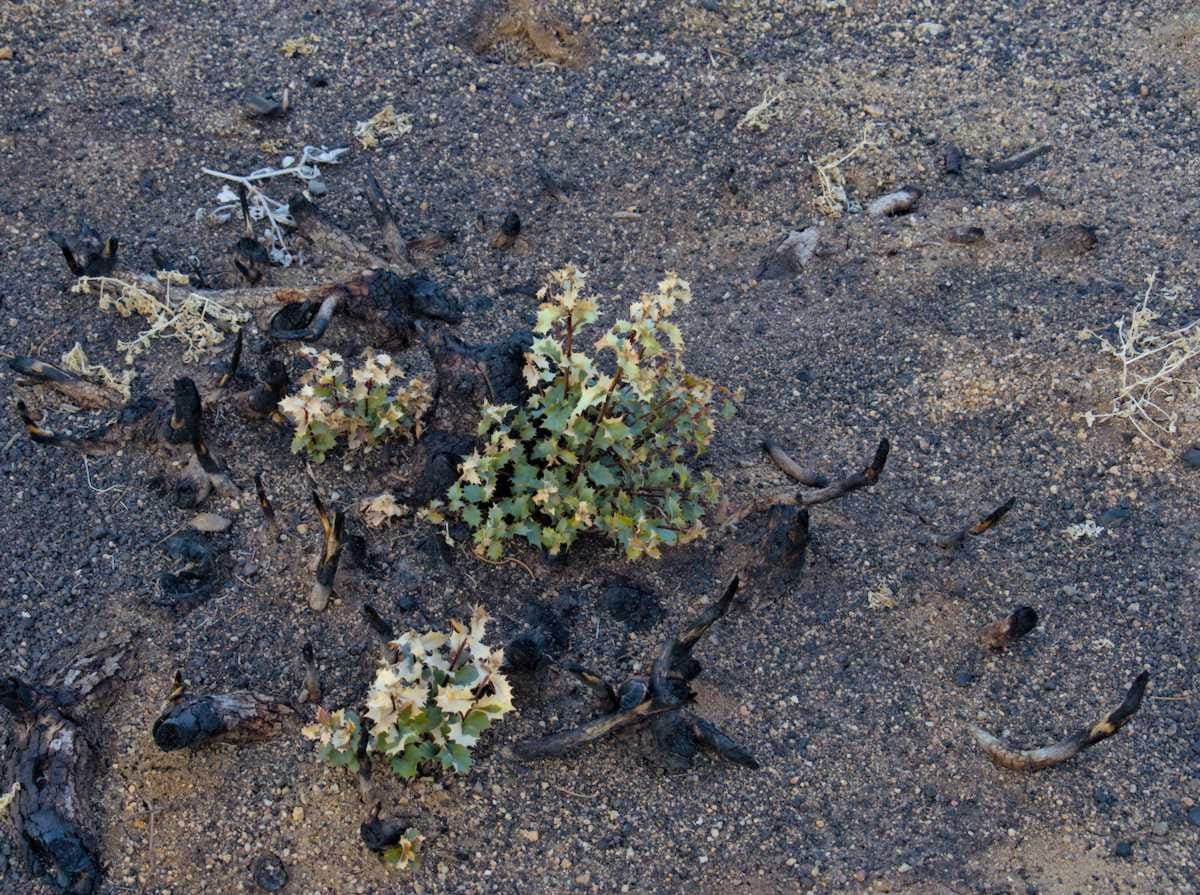
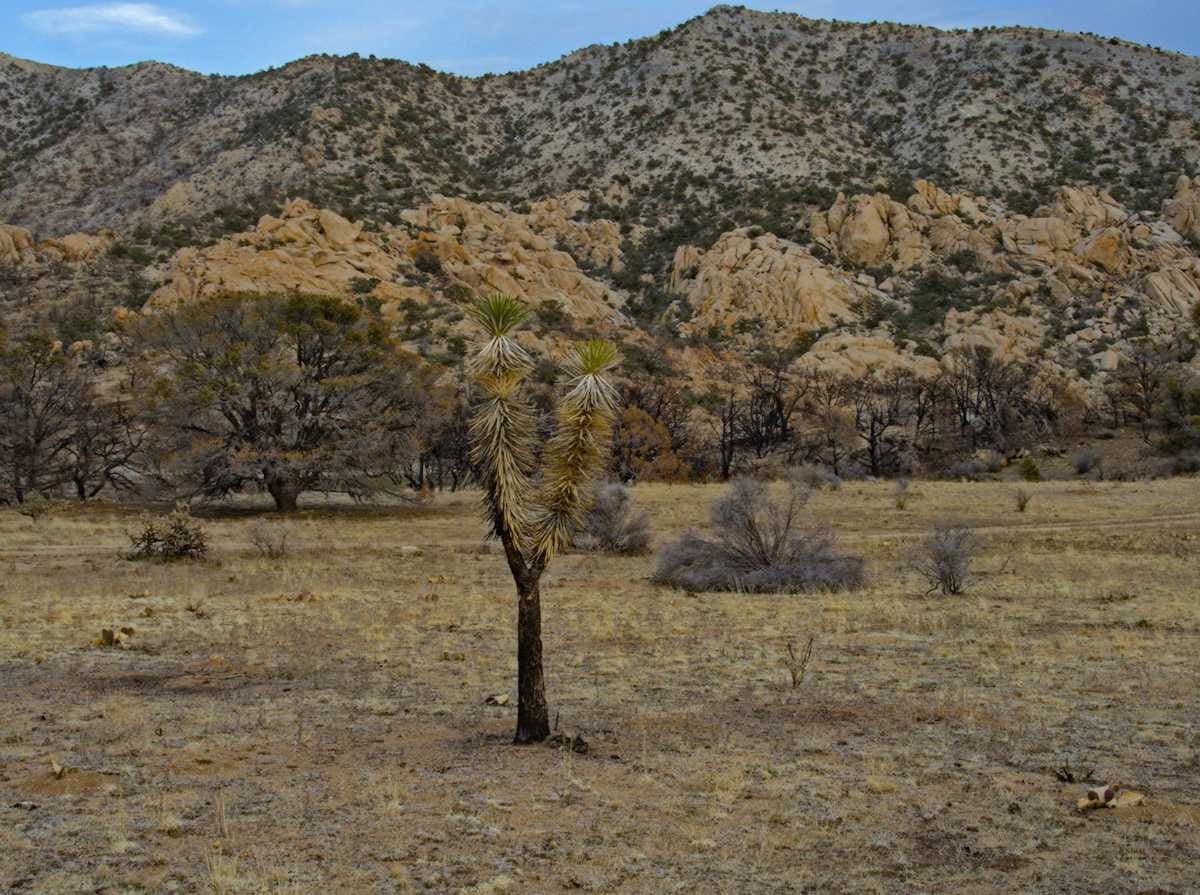

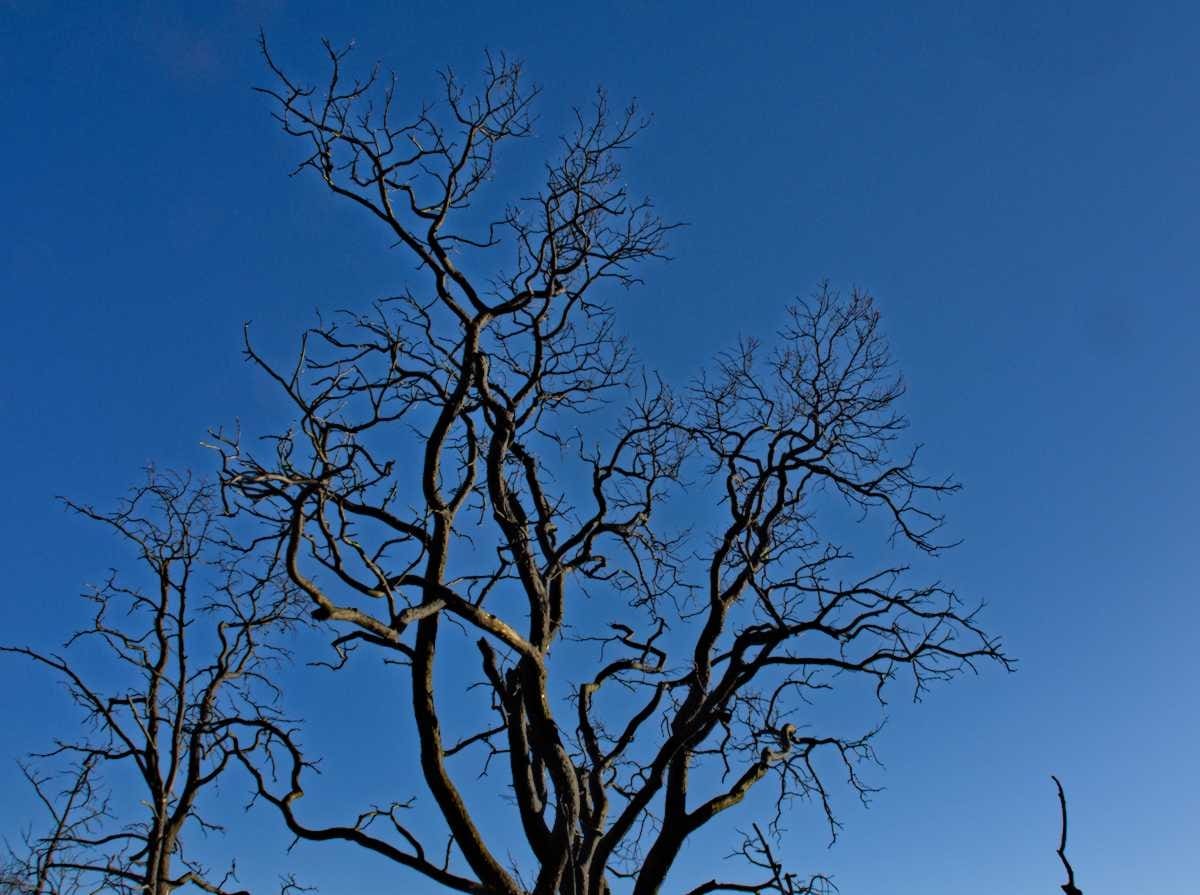
While walking around the mouth of the canyon we found a stone structure and the ashen remains of another cabin (not pictured – the concrete footings and can dump survived) in the location described as George Carruthers homestead. I’m not certain which one, if either, was his.
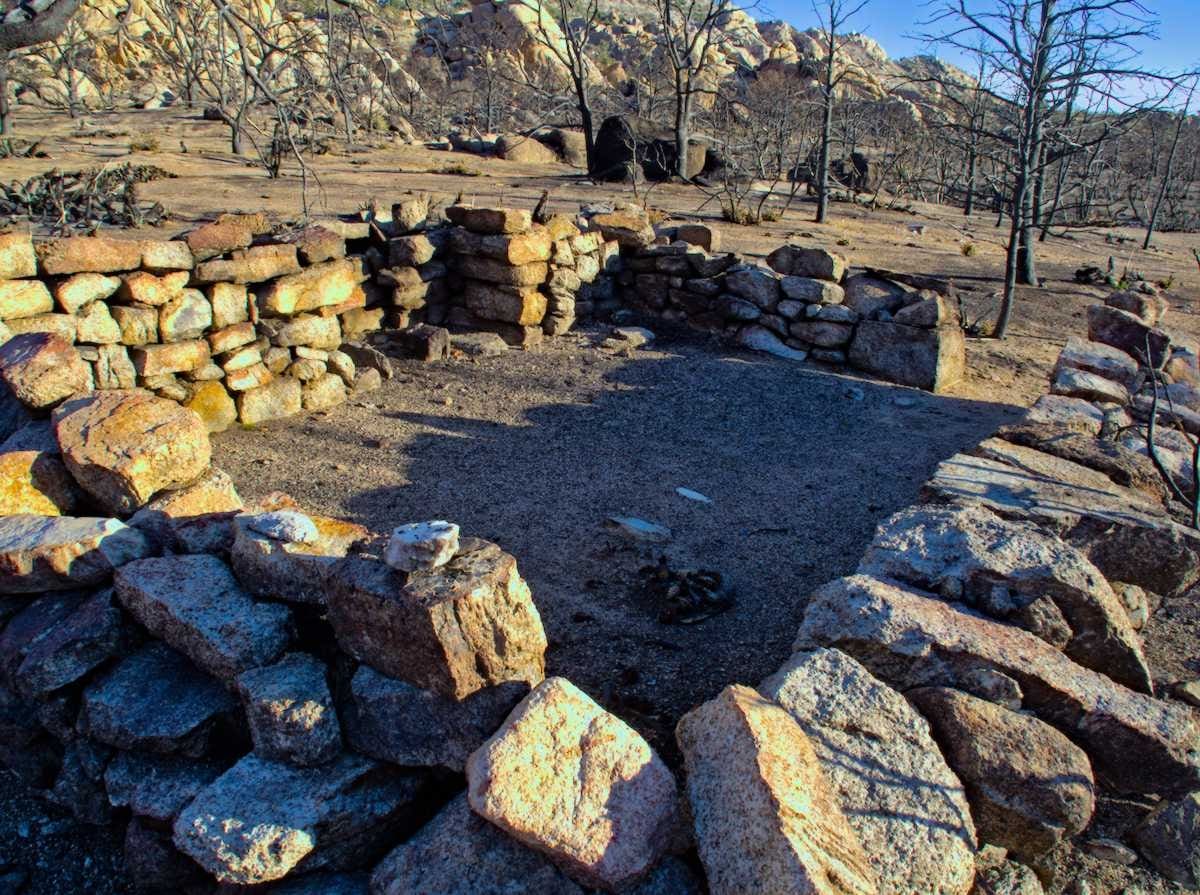
Carruthers homesteaded here and also worked at the mines in the canyon in the early 1900’s, and apparently lent his name to the canyon, even though the spelling didn’t carry over correctly. It must have been quite an ordeal to homestead in this place, or then again, maybe not. I’ll bet the sunsets were every bit as spectacular either way.

The next day we spent hiking to three separate mines located in the canyon. The canyon apparently has a long history of mining, possibly starting as early as the 1860’s with the last activities thought to be in the 1950’s. Copper was apparently the main find, but gold apparently followed quartz veins as well.
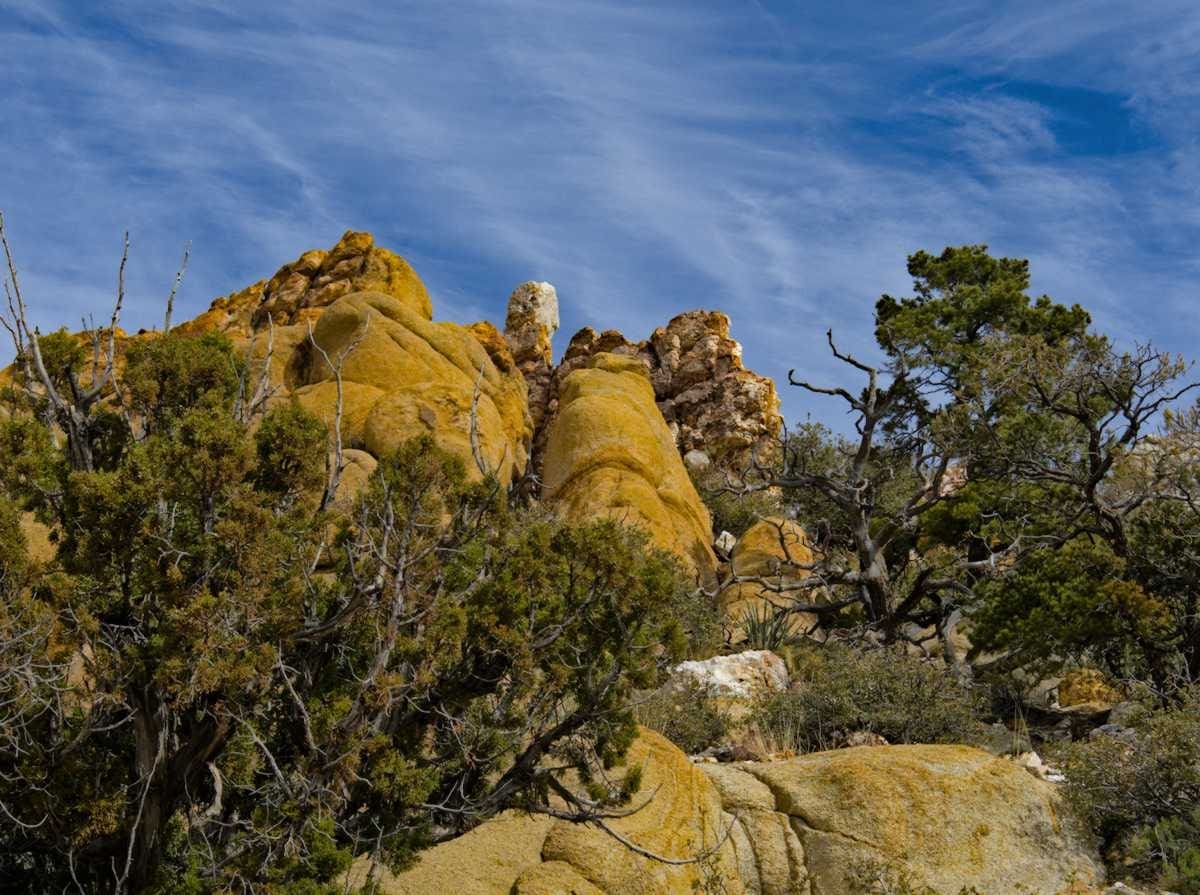

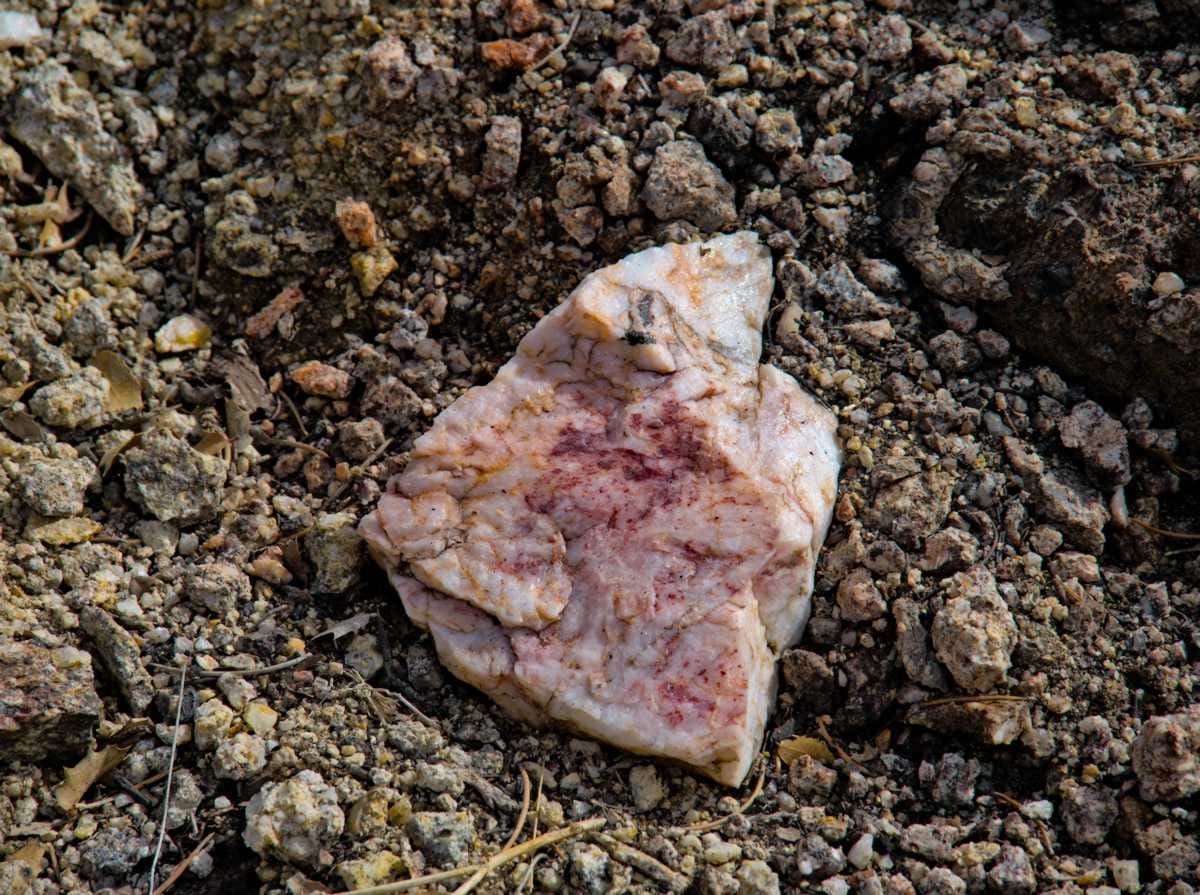
We found the old car and the remains of several buildings. I was surprised to find light switches and wiring in the rubble of some buildings. We eventually made it up the main canyon to the Giant Ledge Mine. You didn’t need to look to hard to see evidence of copper in the rock.


It was somewhat surprising to see such a vibrant stream flowing out of the canyon.
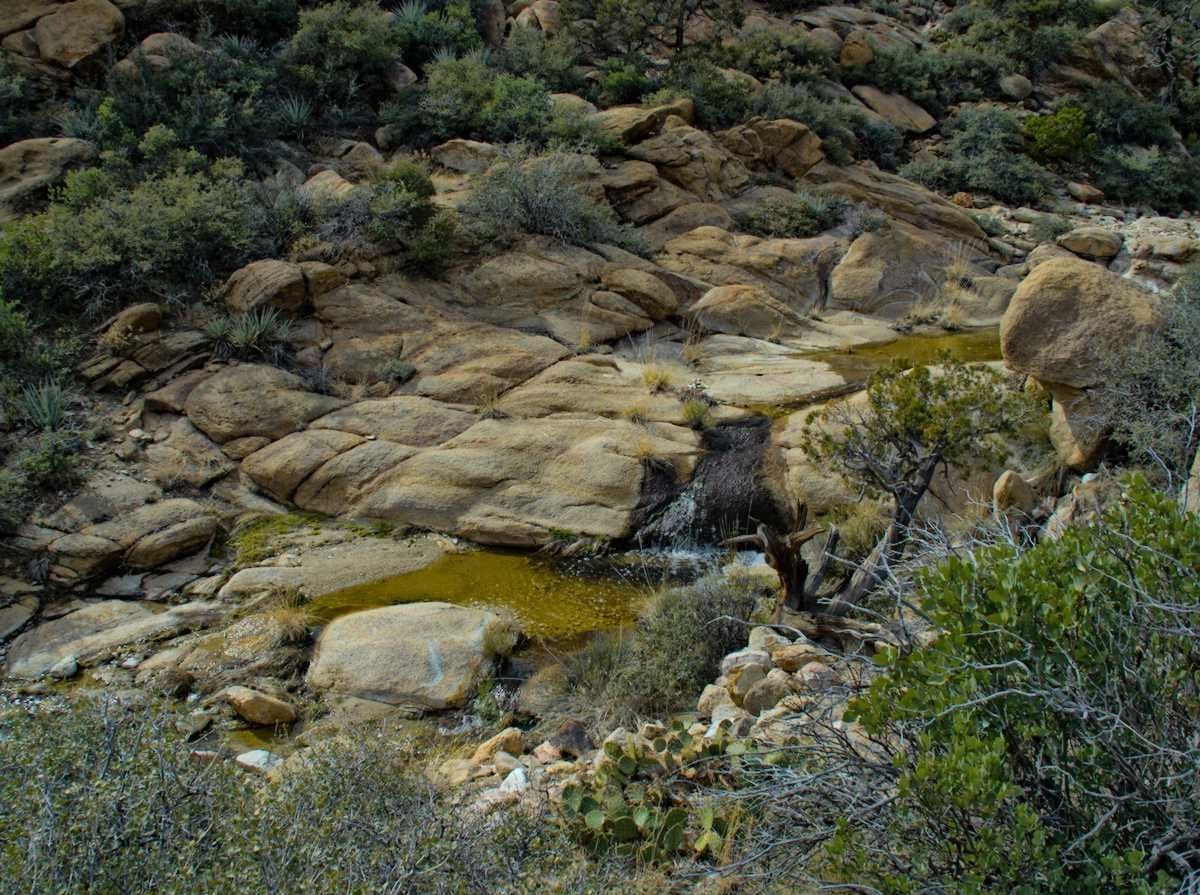
And luckily the miners left the thing that is the most valuable, the amazing scenery.

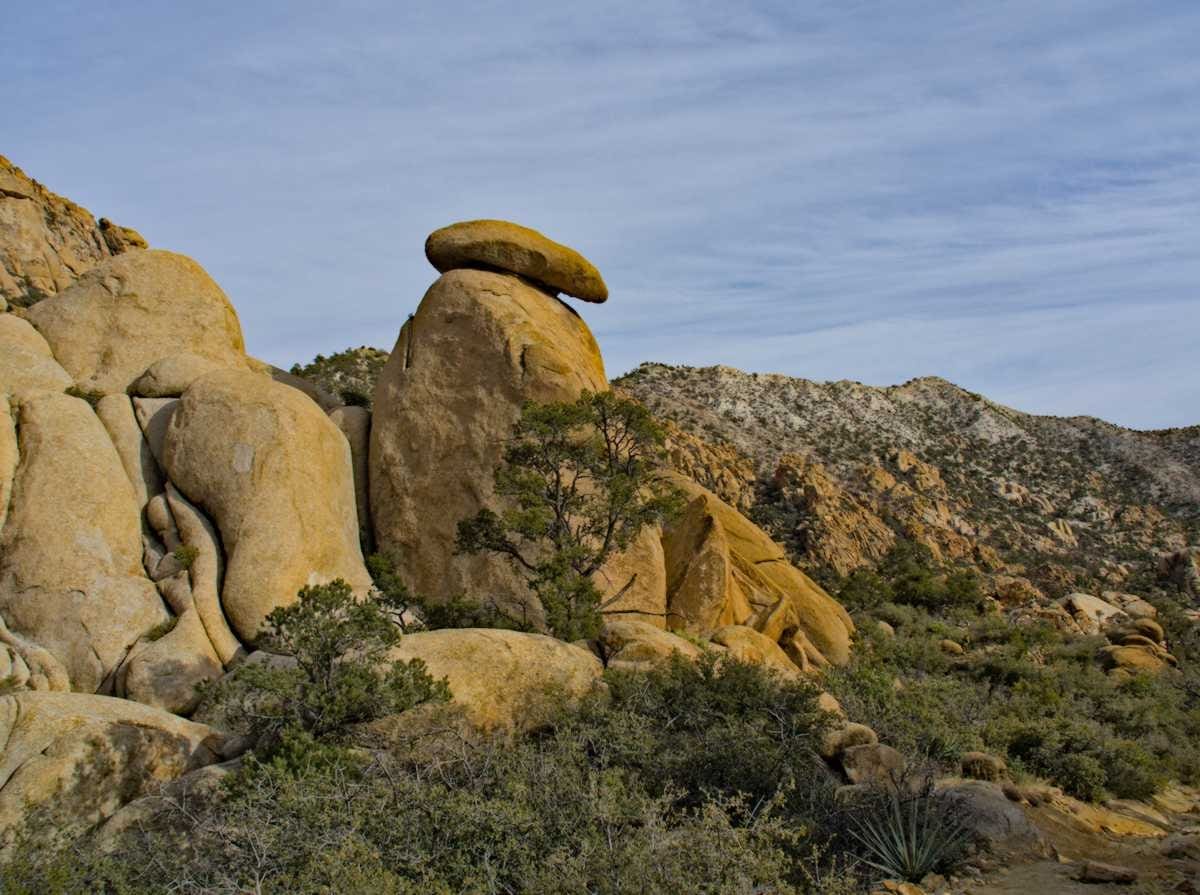
After spending the majority of the day exploring the canyon we made our way back to camp. Watching the light cast shadows on the mountains kept us entertained for the evening.
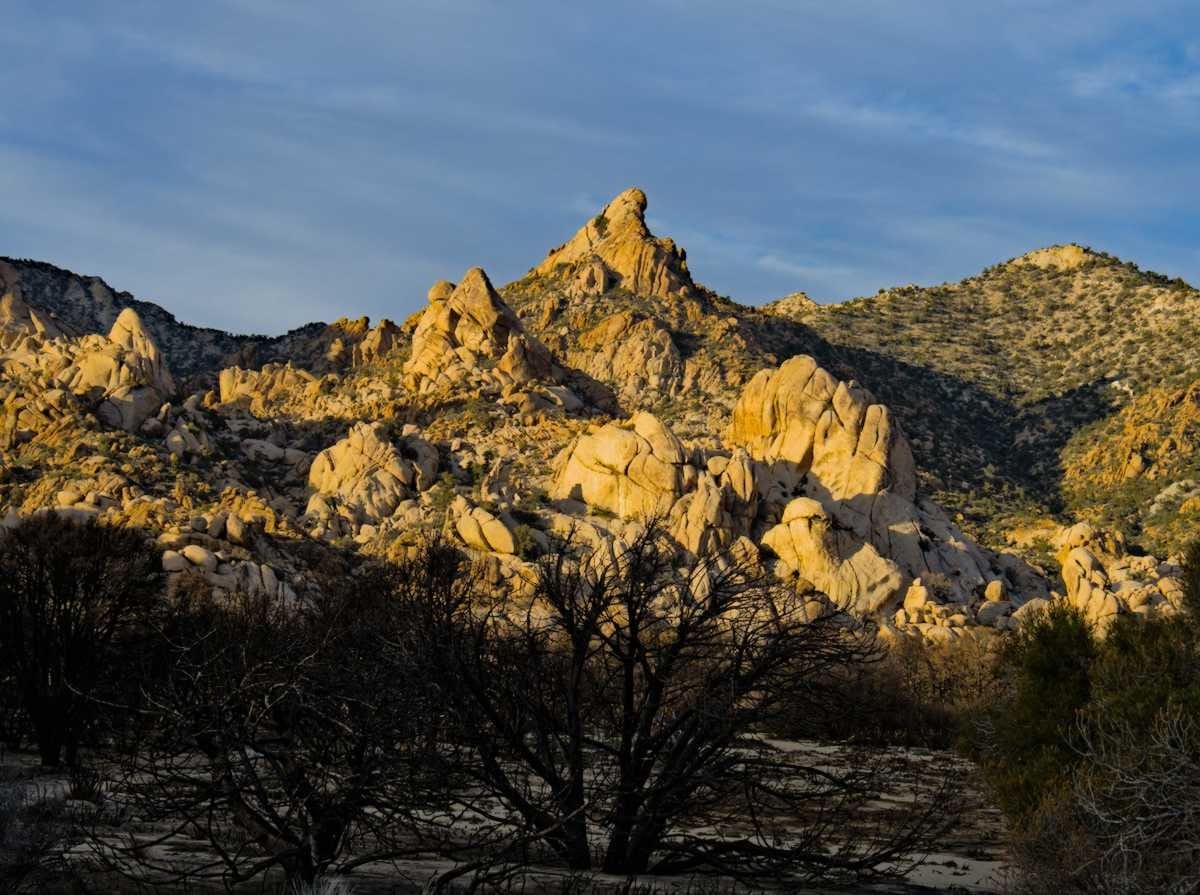
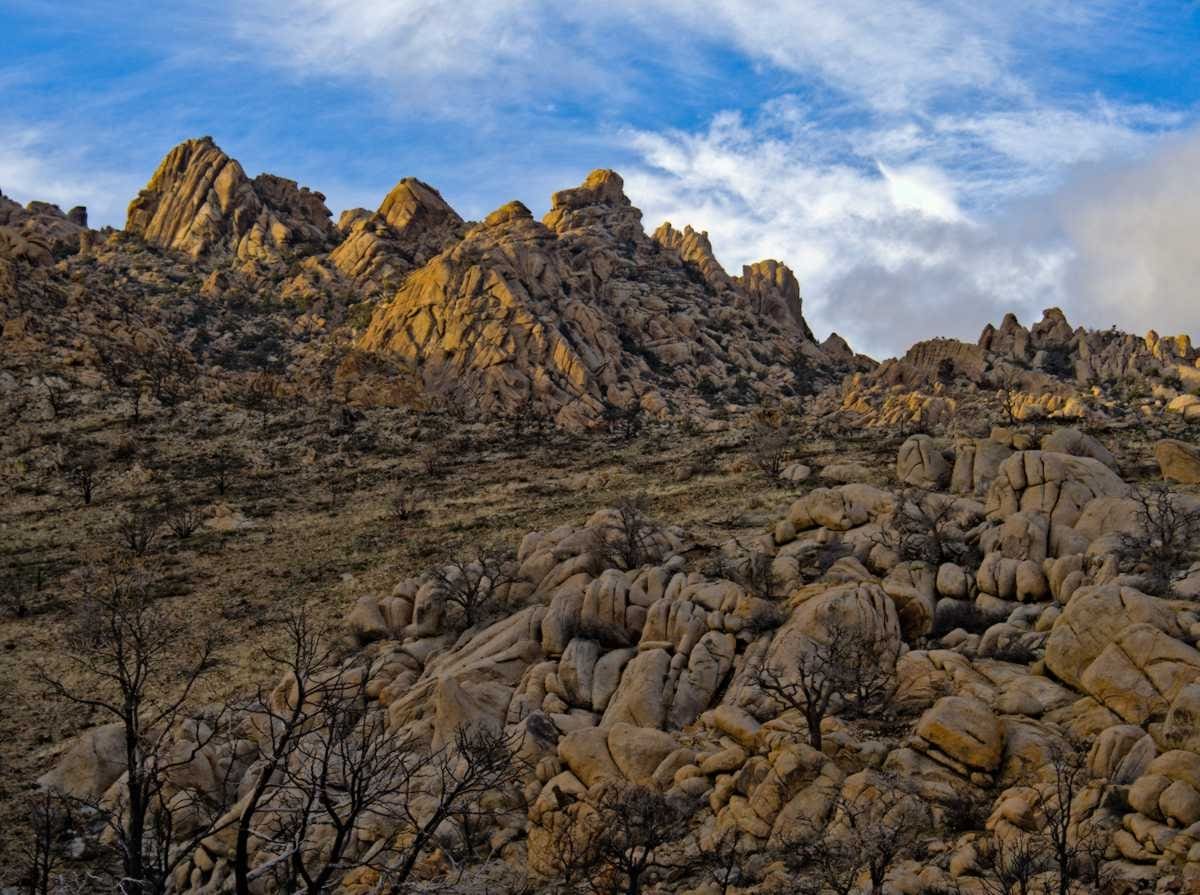
There are several more canyons similar to Caruthers in the New York Mountains. How long could a person spend exploring them all? What about the rest of the preserve? With a bit of imagination and inquisitiveness I’m sure you would never run out of places within the preserve.
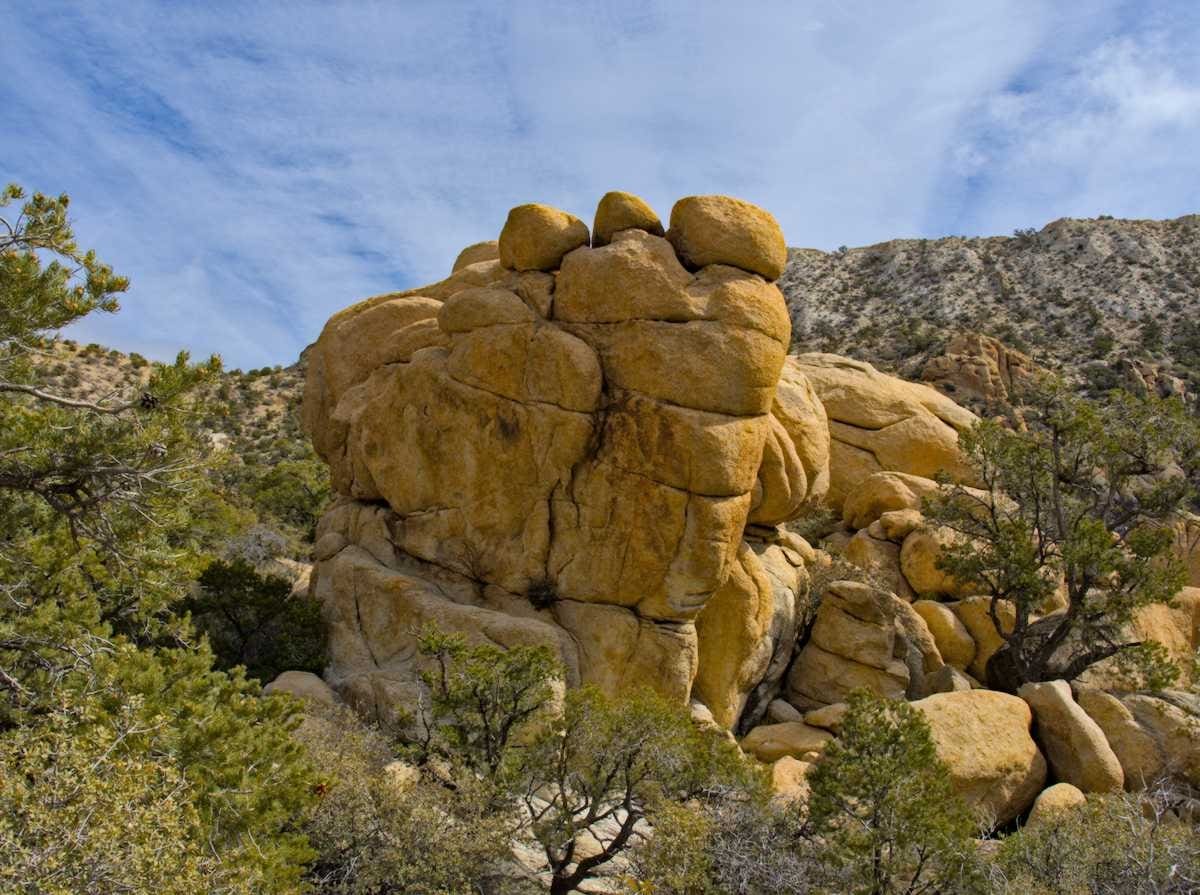
This wrapped up our time in Caruthers Canyon. Where would we head tomorrow? Turns out the weather had something to say in that regard. Until then…
